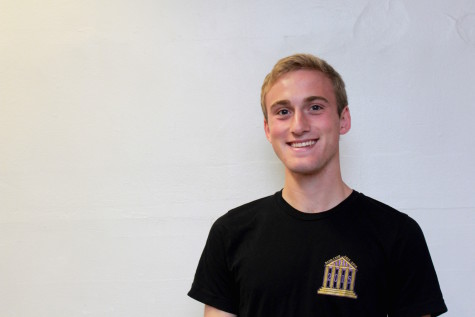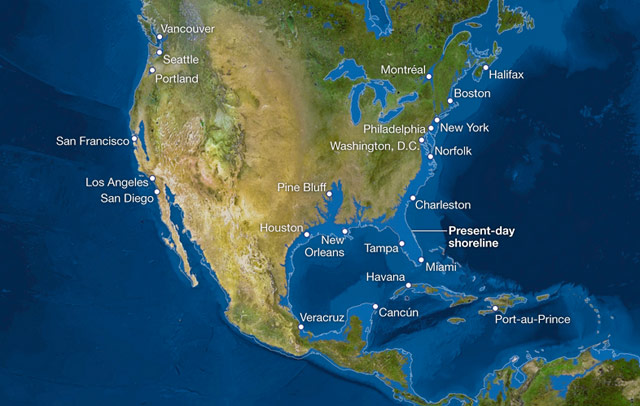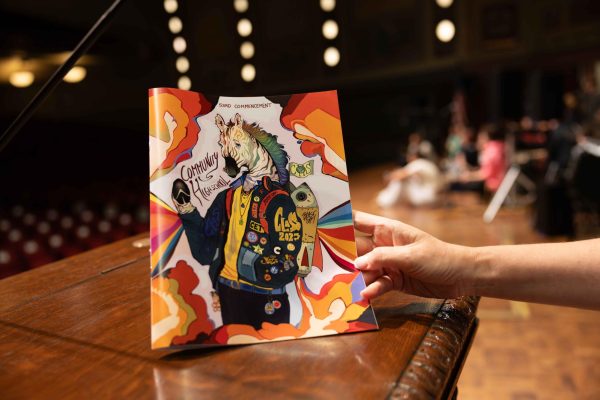Global Warming, Community Take Action
Last year was the warmest year scientists have ever recorded. This is a warning to the students of Community.
Climate change, global warming–whatever you want to call it–is here, and the kinds of changes necessary to stop or slow down extreme weather patterns will change life as we know it.
“What used to be called a 100-year storm, that would cause very high storm surges, that’s now happening more like every 10 years,” said Lisa Snapp, a manager at the Environmental Protection Agency in the Office of Transportation and Air Quality.
Community student Matty Hack readily talked about his concerns over global warming.
“It’s bad stuff. I don’t want to get too apocalyptic, but there are just so many awful side effects that it’s pretty scary to consider them all,” Hack said. “If we assume now that climate change is not a pressing issue, we could seriously regret it. It’s time for everyone to become an environmentalist.”
Hack is correct. Everyone needs to be less passive and more active when it comes to global warming. Students worry about grades, college apps, etc. It’s time to also focus on solutions for global warming.
The Specifics
For the Midwest, the EPA reported that heat waves are becoming more common here, and rain downpours are twice as frequent as they were a century ago.
By the end of the century, summers in Michigan will feel like current summers in Texas.
Smart people are analyzing this data and making these predictions. Why aren’t we listening?
Snapp talked about the changing planting zones of this country. The United States is a top agricultural producer, and the crops this country can grow are changing. Now more southerly crops are surviving, while the northerly ones must move further north to survive.
The Future
Snapp sees the future as being vastly different, having up and downsides. The models show that there will be erosion of coastlines as sea levels rise. Millions will have to move inland from areas that will become parts of the Ocean. This is a frightening thought. The flip side is that the cities that will be built or expanded to house these people can be built in a more sustainable way.
Urban planner Paul Montagno, formerly of Pittsfield Township, agreed with Snapp on how cities will be organized in the future.
“Change is sometimes slow, but the trend is that places become more densely built, more compact, a mixture of uses,” Montagno said, noting that this is less harmful to the environment in terms of global warming and water pollution.
Montagno also advised that students take a class or a unit about civic government and city design to further understand how better built cities can fight global warming.
Needed Action
“I think the US is a leader…even though it doesn’t seem like it and it’s not nearly enough, but our fuel-economy standards are the strongest in the world and so we’re setting the stage. But it’s not nearly enough.” Snapp said.
The EPA mandated that cars, SUVs and minivans double their fuel economy standards by 2025. This was huge. Transportation accounts for one-third of the carbon emissions in the U.S., and 60% of that third is light-duty (commuting, errands) transportation.
There was no hesitation when Snapp advised what young people need to do about global warming.
“Voting is important–people say it doesn’t matter–it matters.” Snapp said. She stressed that where you decide to work, where you decide to live, and how you transport in between destinations is your other large impact on the environment. If you choose a sustainable house that is close to work and you bike there, then you’re doing better for the environment than somebody in a track-mansion in the suburbs driving an SUV to work.
However, even with all of the scary prospects for the future and needed action, Snapp ended on a high note:
“Don’t lose hope. There is hope that we can deal with it, and we can slow it down, but we have to do it. We have to make changes. We have to vote for people who want to make changes.”










